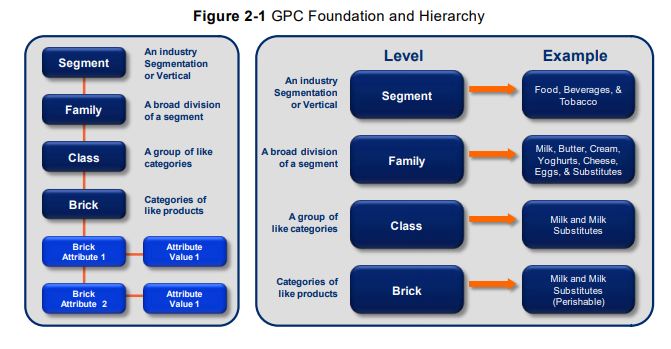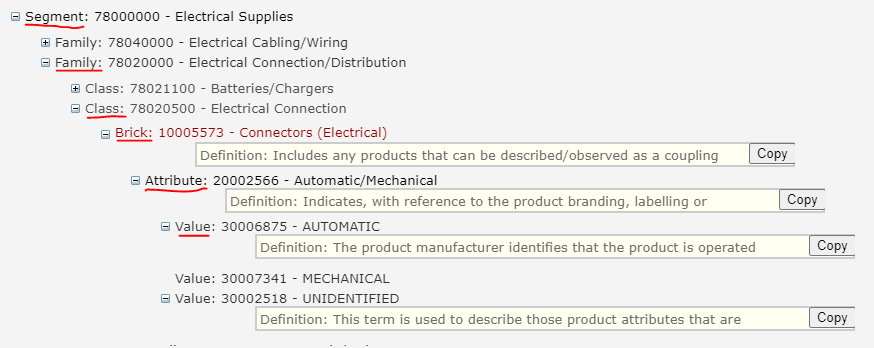Item category
Item Category
An Item Category is a node in a hierarchical structure grouping items with similar characteristics.
Categories can be user-defined or based on GS1 GPC Bricks. The hierarchy can be as deep or shallow as needed.
Example:


All items should have a category, at any level of the hierarchy. Create categories first, then assign their IDs to items.
See Item Category inheritance for more details.
Statuses
Status manages the lifecycle of an Item Category.
| Status | Description |
|---|---|
ACTIVE | The category is active and available for use. |
DELETED | The category is deleted and should not be used, except for reporting or possible reactivation. |